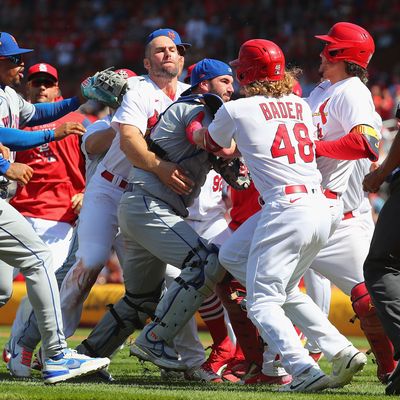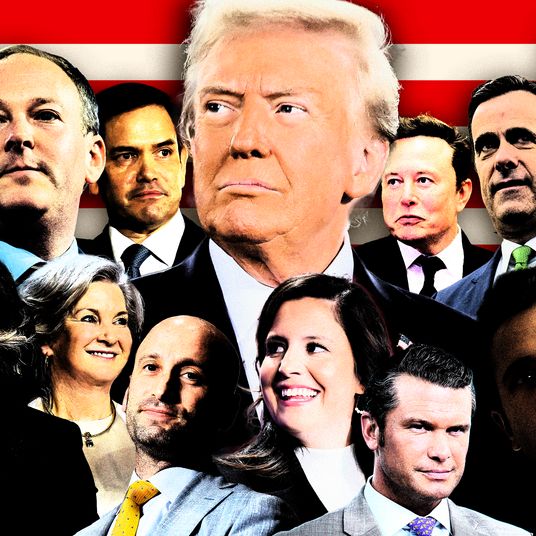
Writing about sports for as many years as I have, I’ve become accustomed to getting the same question from family, friends, and acquaintances again and again: What are the athletes I’ve interviewed really like? Sports stars are so visible in our culture that fans often feel a certain closeness to them, and they want that closeness vindicated by the discovery that stars are exactly the same person off the field as they are on it. Even though I am not a beat reporter and have interviewed fewer athletes than your average deadline hack, I still have some stories at my disposal whenever I encounter this query. Stephen Curry is maybe the most open, friendliest athlete I’ve ever spoken to (I spent two hours with him talking about fatherhood while he pushed his daughter in a stroller down the Embarcadero). Shaquille O’Neal is gregarious and bawdy and sort of a secret savant. Derek Jeter is smooth but distant and chilly and a little more self-aware than you might think. But I generally don’t tell people the real truth about athletes, particularly male ones, because they usually don’t want to hear it. The real truth is that athletes are mostly dolts.
This does not mean they are actually stupid; far from it. Elite-level athletes, a category that encompasses every professional, are total geniuses at what they do, having achieved a higher level in their absurdly competitive field than most of us can even fathom. Get them going on the intricacies of their work — the narrative arc of an at-bat in baseball, advanced defensive principles in basketball, a quarterback’s read progressions in football, and so on — and they speak with the fluidity and expertise of a tenured professor. The thing is that athletes are usually young people who have more expendable income than they’ve ever imagined (particularly the men), the most freedom they’ve had in their lives, and the daily, reality-distorting experience of rooms going quiet when they walk in the door. Imagine being 22 years old and knowing that most strangers you run into are going to dine out on the story of that time they met you for the rest of their life. It’s understandable that this kind of fame makes the average star athlete feel walled off from the real world, especially when it arrives at a time in their lives during which they’re mostly hanging out with other guys the same age and are prone to rash, not particularly studied decision-making. For a while, athletes tend to turn into cavemen. And it is worth keeping this in mind any time there’s a discussion of baseball’s “unwritten rules.”
Last week, the New York Mets and the St. Louis Cardinals engaged in a bench-clearing brawl. It started when Cardinals third baseman Nolan Arenado reacted angrily to a pitch from Mets reliever Yoan López and led to many young men screaming and shoving one another, though, tellingly, never actually throwing any punches or doing anything that would really hurt.
The scene was basically indistinguishable from a sloppy fight among growling meatheads after last call at some Jersey Shore bar. But the story in the days after the incident was not about men snarling and posturing at one another. It was about the “unwritten rule” that had supposedly been violated, which touched off the whole thing. More than any other sport in America, baseball is very concerned with these extrajudicial quasi- regulations, a series of presumably granite axioms passed down from one generation of baseball players to the next. The unwritten rules are meant to govern players’ behavior, to make sure these men can find a way to avoid fighting in a sport where physical contact is almost nonexistent. Supposedly, they’re there to maintain “honor” and “dignity” in the tradition-bound sport. They include but are not limited to:
• Do not pile on an opposing team that is losing. (Examples include stealing bases with a big lead or bunting for a base hit when your team is up 12 runs.)
• Do not “show up” an opposing player. (Examples: Watching the flight of a homer you have just hit for too long or generally displaying any sort of palpable joy.)
• Do not throw a ball at someone’s head or too close to their head or really hit more than one player in any way that might resemble a pattern.
There are more of these — some of them pretty hazy, since they’re unwritten and all. Back to the brawl: The Mets believed the Cardinals, along with the Phillies and many other teams, were purposely throwing at their hitters, and the Cardinals (specifically, Arenado) believed the retaliation (which the team understood was coming, per the unwritten rules) featured a pitch that was too close to their superstar’s head.
But the thing about these rules is they’re not even supported by their own logic. The Mets have been hit by more pitches than any other team in baseball, but there’s a reason for that: They have a roster full of players who have made it a strategy to get hit by pitches. (You do get a free base, after all.) Of the ten players who have been beaned most over the past four seasons, four of them (Mark Canha, Pete Alonso, Starling Marte, and Jeff McNeil) play for the Mets right now. Part of the reason the team brought in Canha and Marte, who are new this year, is that they’re so good at getting on base — partly because they crowd the plate. As for the Cardinals’ side of it, Arenado claimed he was okay with being hit in retaliation as long as the pitch wasn’t close to his head. But, well, watch that pitch again: It’s actually not very close to Arenado’s head, is it? His reaction looks like that of a man who claims he was cool with the retaliation but was not cool with any form the retaliation would have taken. He’s a guy who just wanted to fight.
The mistake normal, logical people make with unwritten rules is thinking about them at all. They make no sense and are not meant to. They exist only so someone can feel justified in expressing their anger in an otherwise unacceptable fashion. If you wrote the rules down, you’d have to stick to them. And players don’t want to stick to them. They want to be angry. They want to fight and to justify the unjustifiable. And seriously: What’s the problem with stealing a base with a big lead, anyway? We’re still keeping score, aren’t we? If the team behind comes back and wins … that win still counts, after all.
There is no other context in sports, or really in the world, in which picking up an object and throwing it directly at another person would be considered acceptable behavior. (It would get my 7-year-old kicked out of his school.) But this is what young, sometimes emotionally immature, extremely competitive baseball players do when they get mad about something. Generations ago, these types came up with an ersatz moral code as a way to pretend they were in the right for being meatheads. But this code is only practiced by kids who hang out exclusively with 25 other kids all day and all night, kids who are disproportionately from Florida. In other words, it’s not a code at all.






























